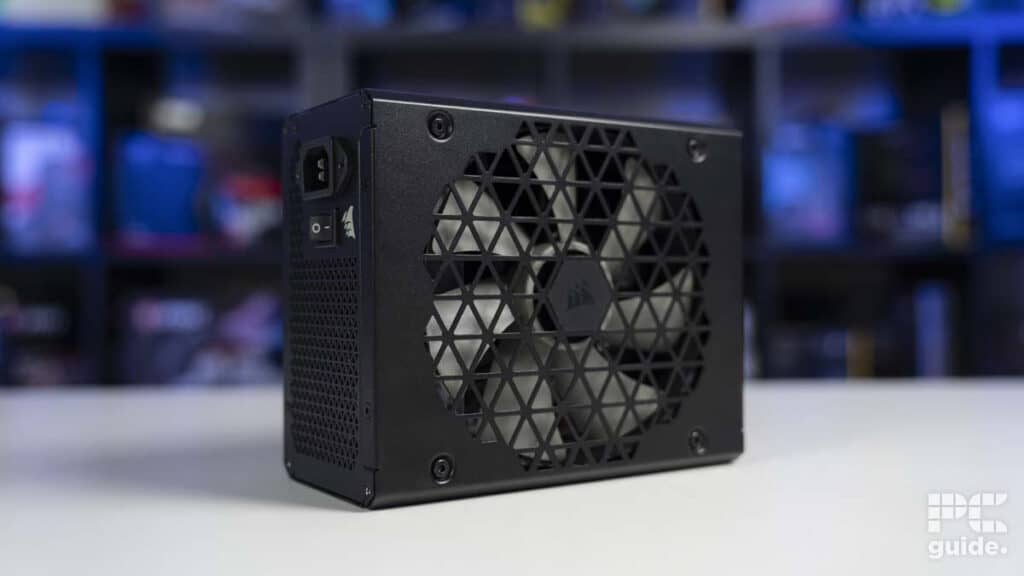Last Updated on
If you were wondering what is ATX 3.0, we’ve got you covered with everything you need to know.
PSUs are the least interesting components in any build, but they hold the most important role: They power the entire rig and safeguard other components from shorting out in case of power surges. That said, ATX 3.0 PSUs follow the latest standard and offer better efficiency and higher power threshold to cater to the next generation of components.
To help you learn more about it in detail, we’ve put together this guide that will walk you through what ATX 3.0 is and whether you should make the leap or not. So, let’s get right to it, shall we?
Quick Answer
The ATX 3.0 is the latest standard that most modern PSUs follow. It offers streamlined communication, better power efficiency, and increased power capacity and stability. ATX 3.0 PSUs are designed to cater to the high power demands of latest-generation hardware such as the RTX 40 series GPUs.
What is ATX 3.0?
ATX 3.0 is the latest standard for power supply units released in March 2022 by Intel. This was a major update to the standard in over 20 years, and the last change was made in 2003 with ATX 2.0.
So, the question arises: Why was the standard upgraded? This was done to accommodate the high power consumption of the new generation of hardware, such as the Nvidia RTX 3000 and 4000 series GPUs. These powerhouses have high power draws, and in case of intense workload, power spikes can take it even above the normal threshold. So, to reduce the risk of disruption, the ATX 3.0 standard came with a couple of changes that would help better manage this situation.

The ATX 3.0 standard mainly introduced a new 16-pin power connector denoted by 12VHPWR. In the previous standards, there were six or 8-pin power connectors, which delivered 75W and 150W, respectively. However, according to Intel, the ATX 3.0 power connectors can provide up to 600W for any PCIe 5.0 GPU. So, as you can see, this was a massive leap in terms of performance and was made specifically to handle the requirements of next-generation hardware.
However, increased power handling capacity isn’t the only aspect that underwent an overhaul. The new standard also ensures better stability due to the increased power threshold and increased efficiency, which reduces overall costs and streamlines communication for efficient power management.
Should you upgrade to an ATX 3.0 PSU?
Many people jump on the new technology bandwagon, and understandably, the latest improvements have their appeal. However, just because something is new doesn’t mean you need to get your hands on it.
For example, if you have an Intel 12th-generation processor with an AMD RX 5700 GPU, you are probably fine with the PSU you already have, as it is most likely capable enough to handle your setup’s total power draw. So, upgrading the PSU just because the latest standard is introduced wouldn’t make much of a difference and would only result in additional costs that could be used to upgrade other components such as the RAM, SSD, CPU cooler, and so on.
On the other hand, if you’re making a new build that includes all the latest hardware, such as Nvidia’s RTX 40 series GPU or AMD’s 7000 series GPU paired with Intel 14th Gen, then going for an ATX 3.0 PSU would make sense as you’d need an option with a high power handling capacity and stability.
So, the answer to this question depends on your requirements, which can change from scenario to scenario. The best thing to do is to gauge the total power draw and see whether replacing the PSU with an ATX 3.0 PSU would be a better investment in the long run.
What is the difference between ATX 3.0 and ATX12VO?
The main difference between ATX 3.0 and ATX12VO is that the latter has a 10-pin power connector that delivers 12V compared to the former’s 16-pin power connector, which handles significantly more power.
Due to the limitation of ATX12VO, the PSUs following that standard aren’t compatible with older ATX motherboards. On top of that, since the ATX12VO has a single 12V rail, components with varying voltage levels, such as 5V, run the risk of getting burnt or circuiting.
Verdict
To conclude, the ATX 3.0 standard is the latest update in the long-standing ATX design, and if things go down the same path, we could be looking at a couple of years before the ATX 3.0 is replaced. It is designed to handle higher power consumption and offer better energy efficiency and stability.
So, if you plan on installing a power-hungry GPU in your build, investing in a good ATX 3.0 PSU would be better to ensure the rest of your components can operate optimally and eliminate any potential power disruptions.
If you’re interested in checking out PSU upgrade options, check out our best high-end PSU guide, which has the best picks available on the market.



